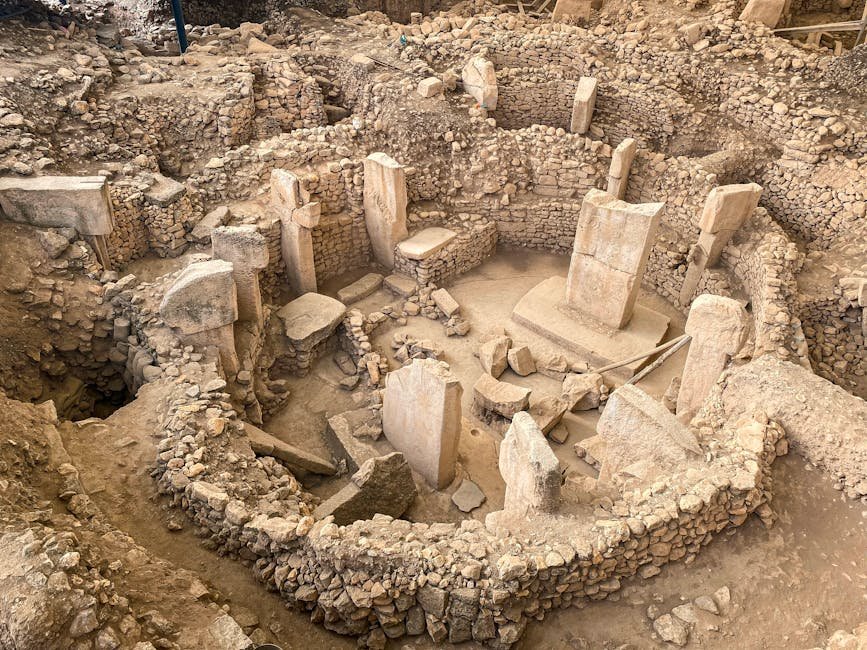Formed more than 415 million years ago—before the extinction of the dinosaurs—the rocky cliffs of the Niagara Escarpment are a product of an ancient lake stretched from what is now Wisconsin to New York state.
While Niagara Falls is easily the most famous geological feature along the escarpment’s many steep rock faces and promontories, for many avid hikers, the touristy natural wonder is merely the starting point for a 560-mile (900-kilometre) trek through southern Ontario, from the Canada-U.S. border to the rugged Bruce Peninsula, which juts out into Lake Huron. Sneaking around the edges of some of the most densely populated regions of Canada before heading north into coniferous forests, Carolinian forests, meadows, and wetlands.
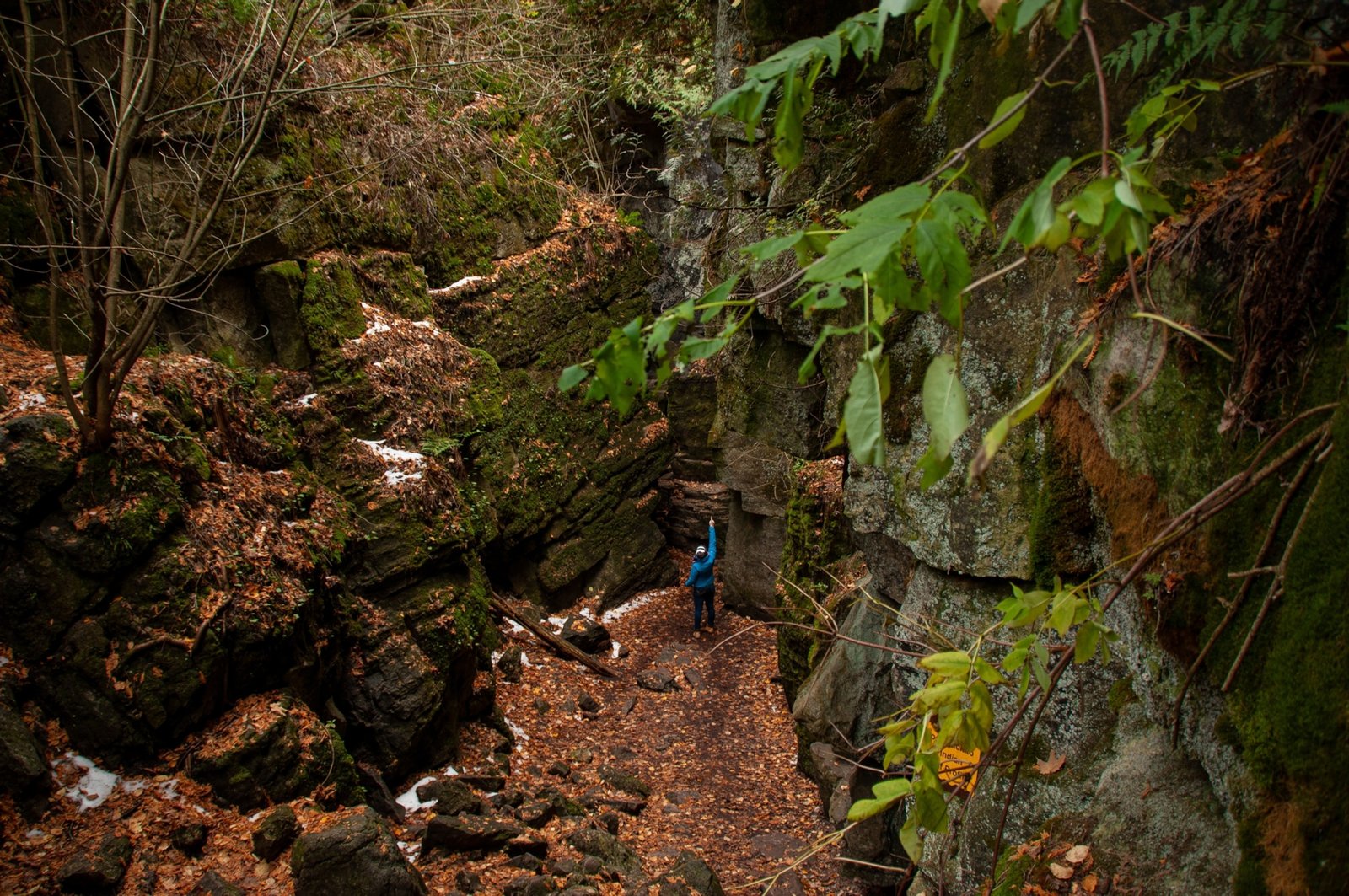
A woman points up at a cave in a crevice on the Niagara Escarpment. Some runners have completed the Bruce Trail in fewer than nine days, and less competitive types do it in segments over years.
Photograph By Matt LaVigne/Shutterstock
The trail sometimes cuts through cute rural towns; the hike along the Bruce Trail is an expedition that can include major art museums and artisanal ice cream, as well as intimate encounters with nature. Niagara Falls might be on postcards, but the trail offers an estimated 500 more waterfalls along the way. At points, the escarpment ridge reaches heights of more than 1,000 feet (335 metres).
“Within my first week of hiking, there was a fox up ahead on the trail. Our eyes met, and there was no fear from either one of us. We took that moment, then he gently walked away,” says Annette Sandberg of her first end-to-end hike of the Bruce Trail, which she completed in 2016. She later became hike director for the Blue Mountain Bruce Trail Club, one of nine volunteer-led clubs that provide resources, tours, and drop-off and pickup services for hikers. The club also maintains the main trail and its 250 miles (400 kilometres) of side trails.
(Canada’s greatest natural wonders, from icebergs to the world’s highest tides)
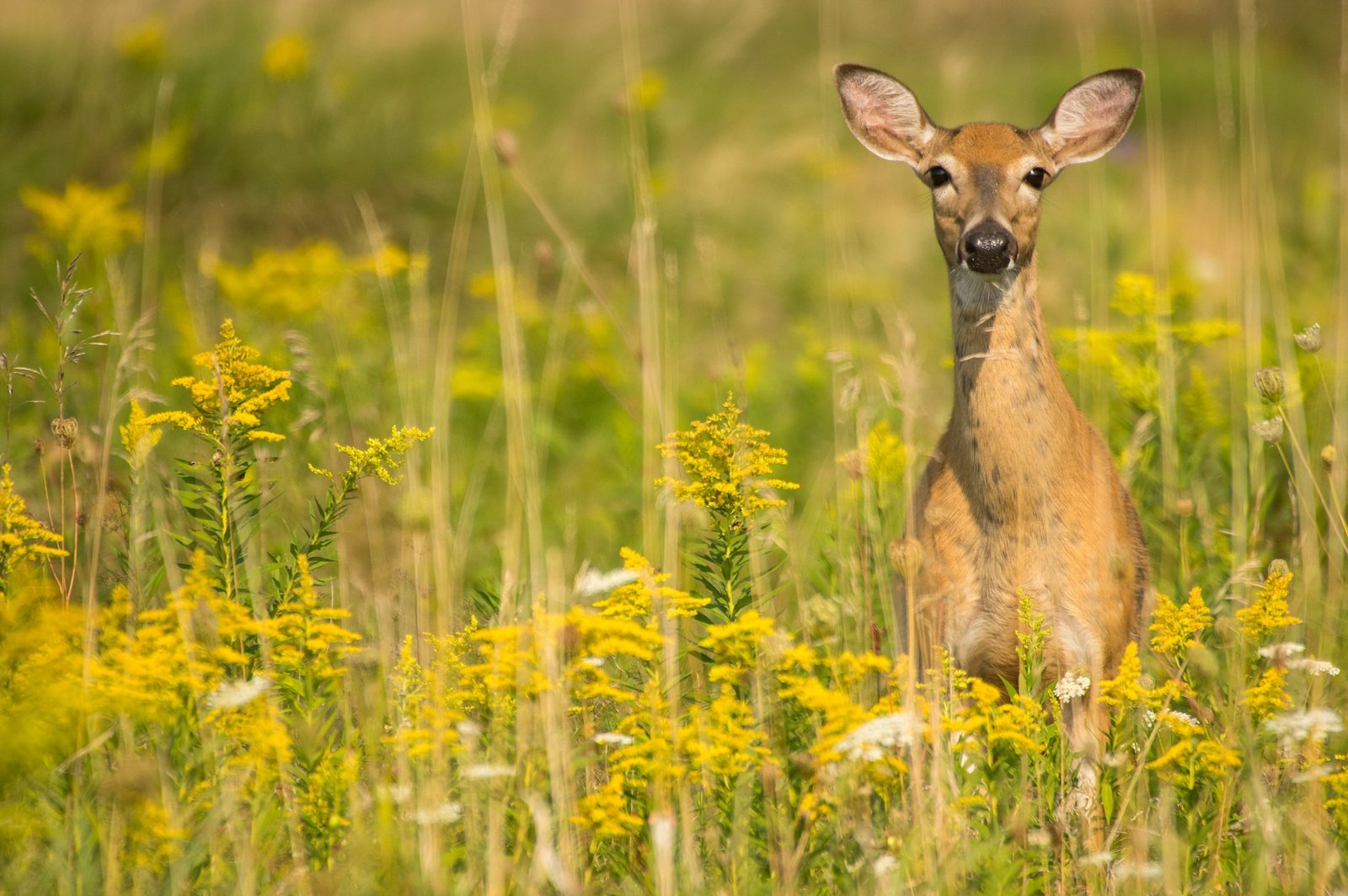
White-tailed deer stands alert in a meadow of tall grass and wild flowers—an example of wildlife hikers and runners may spot along the Bruce Trail in Canada.
Photograph By Oli Moorman/Shutterstock
Runners have done the trail in as little as nine days
More than two million people use the Bruce Trail each year. Hikers can start the trail at hundreds of entry points; some trailheads have parking, while others are more makeshift. Many locals will use portions of the trail nearest their home for short breaks in nature. Hiking the entire trail end-to-end without multi-day breaks typically takes between 35 and 45 days. Some runners have done it in fewer than nine days, and less competitive types do it in segments over the course of years.
About 40 hikers complete the end-to-end trek each year. Most of them register their achievement in the archives of the Hamilton Public Library. Sandberg, for example, took about six months for her solo end-to-end, hiking about four days per week. “When you’re not talking to somebody all day, a very special thing happens. The forest starts to tell you its story,” says Sandberg.
The story of fossils—coral, trilobites, and crinoids— is seen in the cliffs along the trail, dating back to the Silurian Period of the Paleozoic Era. The wide array of flora and fauna currently living in the UNESCO World Biosphere includes 300 species of birds, including the Bobolink, Cerulean Warbler and Eastern Meadowlark, 55 mammals, including the White-tailed deer and the endangered Little Brown bat, 36 reptiles including the Massasauga snake and amphibian species like the endangered Jefferson salamander, as well as 90 fish species.
(Nine ways to experience Canada’s natural beauty)
The Bruce Trail story also includes the experiences of Indigenous people, whose traditional routes followed the escarpment for thousands of years before the Europeans arrived, as well as the Underground Railroad, when it was part of the network used by enslaved African Americans to escape to freedom in Canada during the 19th century.
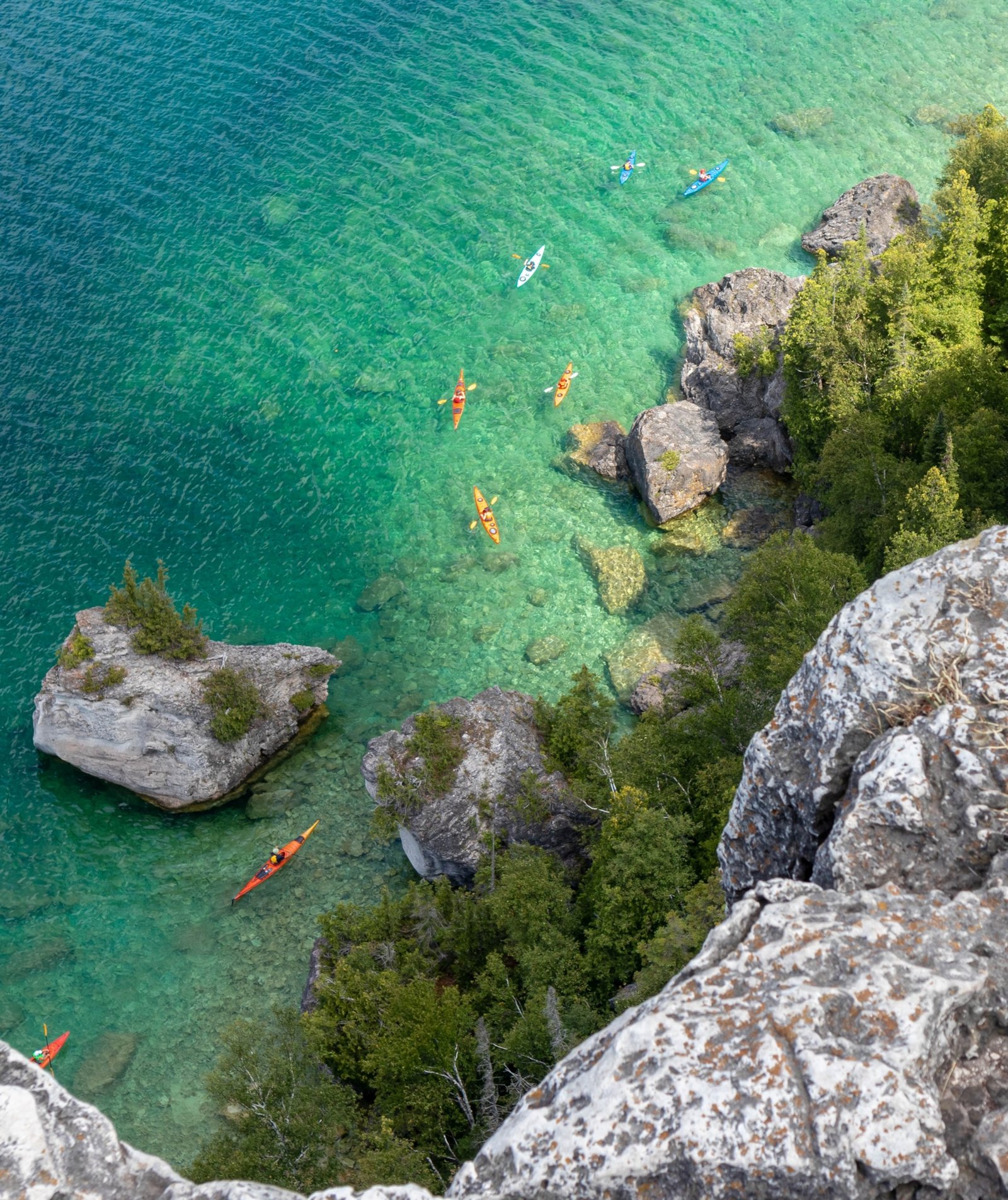
Adventurous travelers—who want to do more than hike, walk, or run along the Bruce Trail—can stop to go kayaking at Bruce Peninsula National Park in Tobermory, Canada.
Photograph By NatureN8/Shutterstock
“I hadn’t really thought expansively about how Black history had showed up on the Canadian side of the border,” says Zwena Gray, a Black environmentalist, climate activist, and community cultivator. Originally from Detroit, Gray discovered the Bruce Trail when she came to Canada to study environmental sciences at Ontario’s Trent University. Hiking with a friend, it took her 39 days to complete her end-to-end journey. “The hike was so connected to the history work I wanted to do, about the intersection between Blackness and the environment.”
(These Indigenous women are reshaping Canada’s tourism industry)
The Appalachian Trail was an inspiration for the Bruce Trail
The Bruce Trail was conceived in 1960 by two naturalists, Ray Lowes and Robert Bateman. The Appalachian Trail in the U.S.— founded in the early 20th century—inspired them. By getting people excited about the unique geographical characteristics of the escarpment—its commanding views and impressive biodiversity—and inviting the public to walk along it, they hoped to build a movement that would help conserve a vast swath of nature running through Canada’s most populous region. More than eight million people now live within an hour’s drive of the escarpment.
Today, the Bruce Trail Conservancy oversees roughly 16,000 acres of land. About 72 percent is protected land owned by the conservancy itself or by the government. The rest is private, dependent on the generosity of property owners. The conservancy’s goal is to protect the entire trail and the surrounding green space. So, it buys between 15 and 20 properties each year, says CEO Michael McDonald. The constant land acquisition means the route of the trail is always changing—nobody does the end-to-end hike the same way twice.
The conservancy provides resources on where to stay along the trail. By 2030, the organization wants to have overnight rest areas along the entire trail, which means that hikers who are willing to camp will have to rely less on local clubs and their shuttle services to get to a place to sleep. For now, trail-adjacent accommodations can range from the 21 camping areas—most of them free and located near the trail—to hotels, hostels, and B&Bs. The selection ranges from slim to robust.
The city of Hamilton, for example, is essentially cut in half by the Niagara Escarpment, just as a river might, so the trail follows a cliffside green strip right through the middle of the city of 600,000 people—chain hotels, the well-curated Art Gallery of Hamilton, pubs, and grocery stores aren’t far from the route.
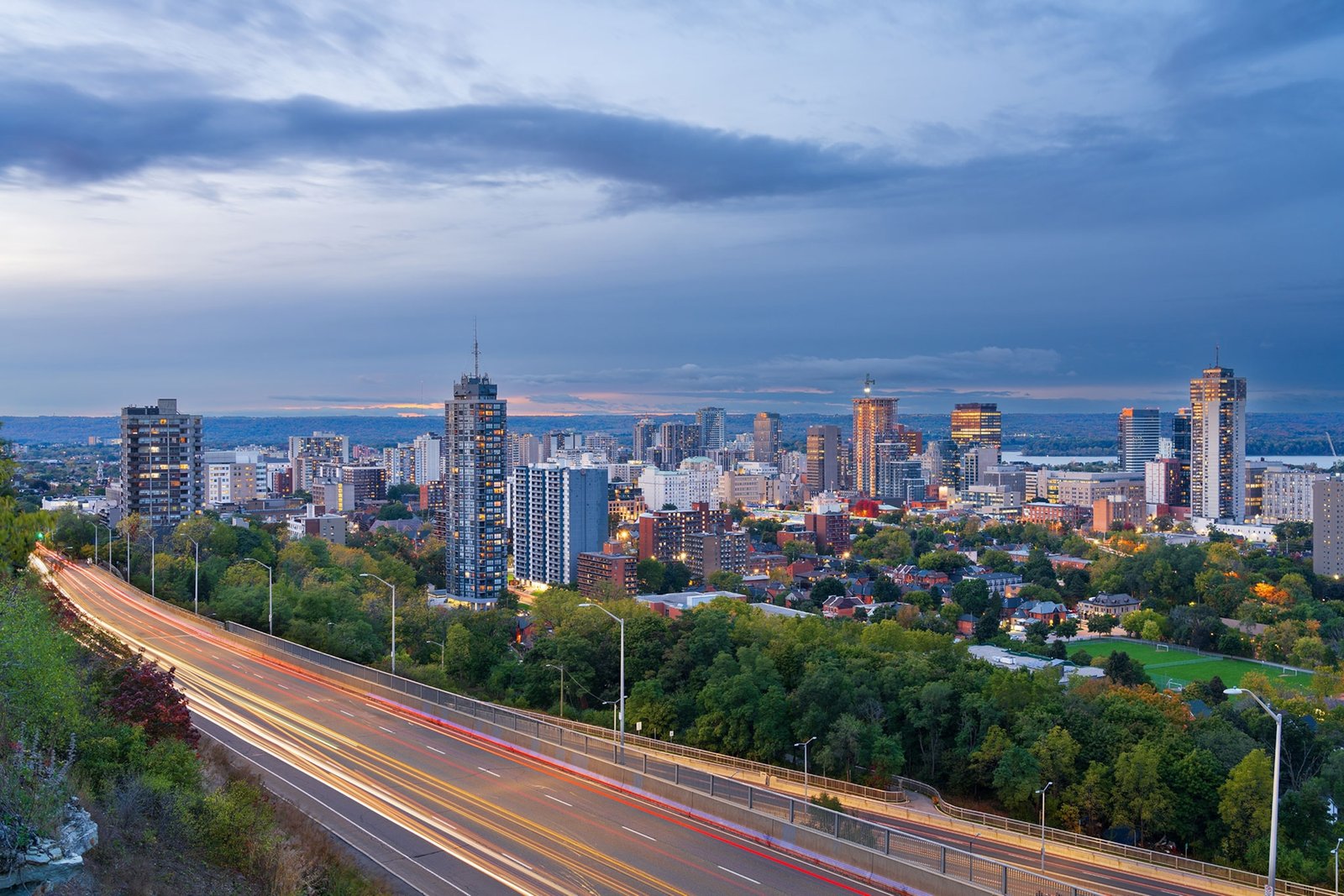
While hiking Canada’s Bruce Trail, travelers can make a pitstop to rest and explore downtown Hamilton, Ontario, which has several hotel chains, pubs, grocery stores, and the not-to-be-missed Art Gallery of Hamilton.
Photograph By Sean Pavone/Shutterstock
The trail might stop, but the escarpment continues north
“One of the great joys of the Bruce Trail is that you can experience it however you wish. You can hike from north to south or from south to north. You can do sections at a time, or you can hike at your leisure,” says McDonald, who has been doing his end-to-end treks little by little and intends to finish this fall.
Surrounded by the turquoise water of Lake Huron and Georgian Bay, the Bruce Peninsula section of the trail passes through towns like Wiarton and Lions Head, which have charming pubs and restaurants where hikers can unwind. The northern terminus of the trail is in Tobermory, a picturesque town surrounded by parks and beaches.
Tobermory may seem like the end of the road, but it doesn’t have to be. People here can visit Fathom Five National Marine Park, camp on Flowerpot Island, or dive to see multiple shipwrecks. Or they can take a ferry north to Manitoulin Island, where the escarpment continues, though the Bruce Trail itself does not.
(This is what a meal looks like in Canada’s Niagara wine country)
Paul Gallant is a Toronto-based writer and editor who covers travel, business, social change and LGBTQ+ issues. Follow him on Instagram.

